A giant celestial map from a retro knitting machine!
Where does Science meet Art? Or the other way around, where does Art meet Science?
It’s a hard question to answer, and probably depends on the sort of project under consideration! But here is one example that we think fits the definition!
A software engineer in Melbourne, named Sarah Spencer has used her technical background to hack into a 1980’s old knitting machine to re-programme it to do things it was never designed to do! It is now a Knitting Network Printer!
The result of Sarah’s know how is a giant tapestry of the visible universe in the Western world, featuring all 88 constellations and major celestial bodies of our solar system.
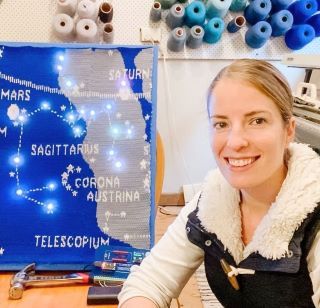
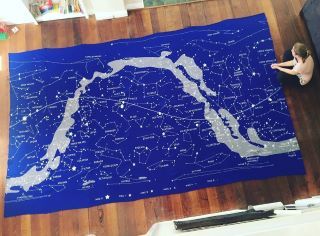
Sarah works as a computer software engineer. She started playing around with an old knitting machine back in 2011, essentially reverse-engineering its ancient inner workings to turn it into a kind of pseudo, networked, four-colour printer.
She initially used it to make patterned scarves, jumpers with QR codes, laptop covers and baby blankets for friends (and her Etsy store). She then she won a sponsorship from the 2018 Electromagnetic Field (EMF), which is a summer tech festival in the UK that explores the collaboration between art and science.
She used her grant to “think big” to create a bigger and better project.
She wanted to create something which would inspire young minds as to what is possible when you combine the various disciplines of ‘STEM’ education (science, technology, engineering, mathematics), an objective very much in keeping with the EMF vision.
So she decided to programme the knitting machine to make a tapestry with an ambitious pattern: a star map of the visible universe, complete with LED lights. Another challenge was to programme the retro knitting machine to stitch with “bird's-eye backing” (a simple pattern that ties the wool down behind the tapestry) using one knit per pixel in three colours.1
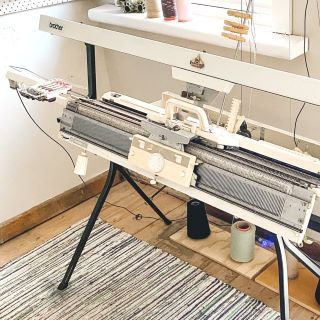
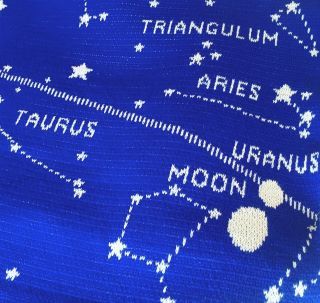
The end result is made from locally sourced Australian wool in a lovely deep blue, with white and grey depicting the solar bodies. It is three metres by four metres long, and weighs 15 kilograms – no mean feat to produce from an old knitting machine that was headed for the scrap heap!!
Sarah decided to call the tapestry “Stargazing: a knitted tapestry," with the main entities such as the Milky Way galaxy, the Sun, Earth's moon and all of the planets within our solar system all represented. As a further item of exquisite detail, Sarah ensured that all the celestial bodies were positioned exactly as they appeared on the date that she travelled to the UK to present her work to the EMF camp! Incredible!
The work was very well received for its accuracy, detail, uniqueness and initiative and won her a modest amount of international publicity.
Sarah returned home with her acclaimed tapestry, and has now donated it to Victoria’s State Library. It is now the centrepiece of a Handmade Universe exhibition along with the work of nine other contemporary artists, designers and makers and 68 items from the State Library Victoria’s own collection, including old books and maps, such as John Flamsteed’s Atlas coelestis dating back to 1729. It was the very first map to show the sun as being the centre of the universe!2
The exhibition is running until the 26th of February 2023. If you live in Melbourne, do go along and see this astonishing work first hand!
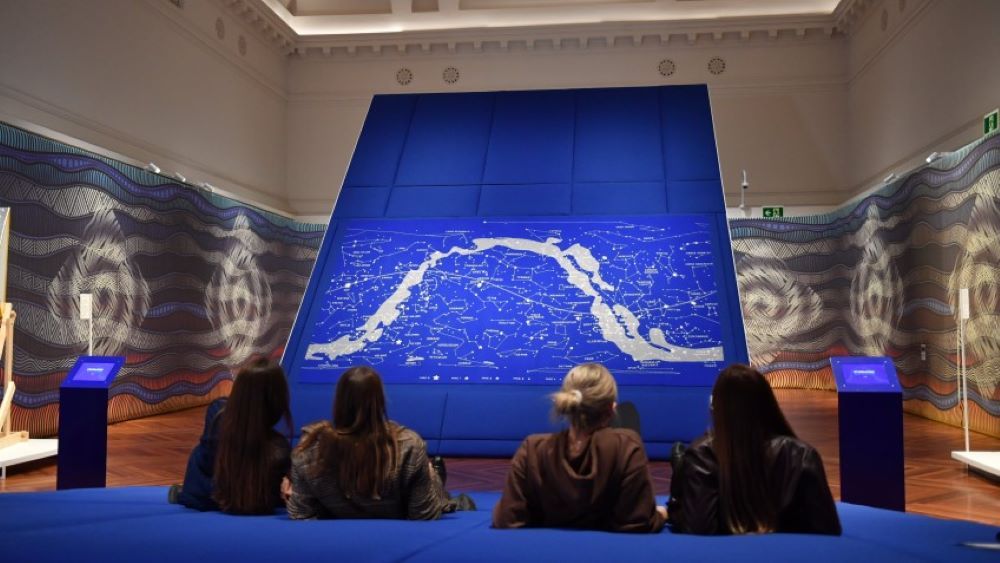
I know I keep saying this in my posts, but isn’t it just incredible the things that people do, and the creativity it inspires! I never cease to be amazed!
Footnotes
- With thanks to Interesting Engineering.com
- With thanks to the State Library of Victoria, slv.vic.gov.au
